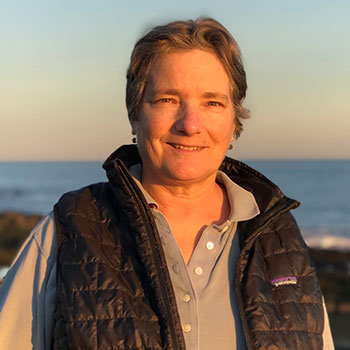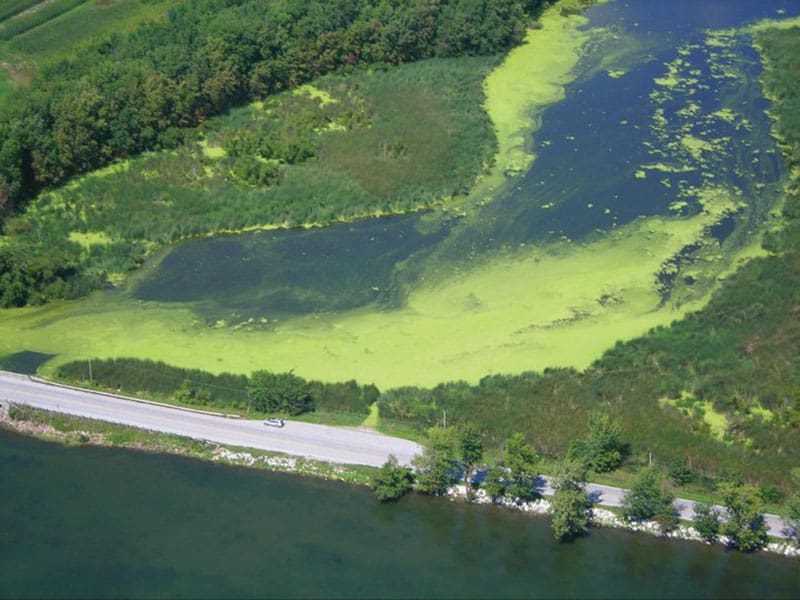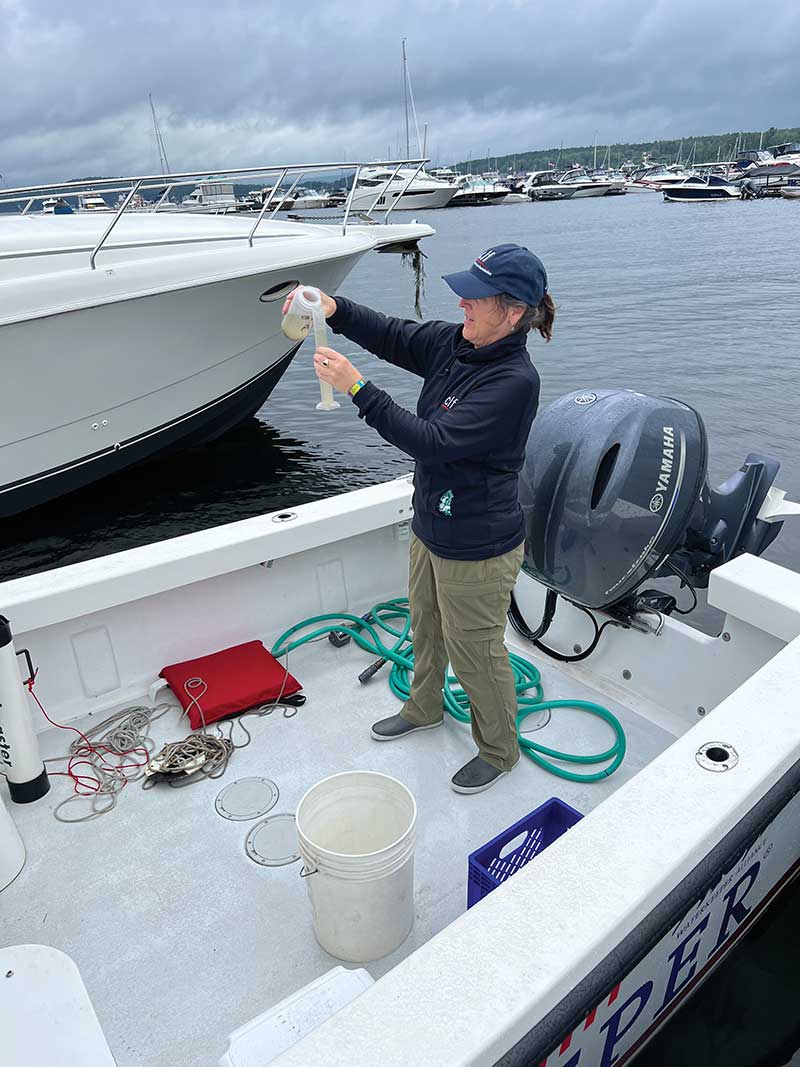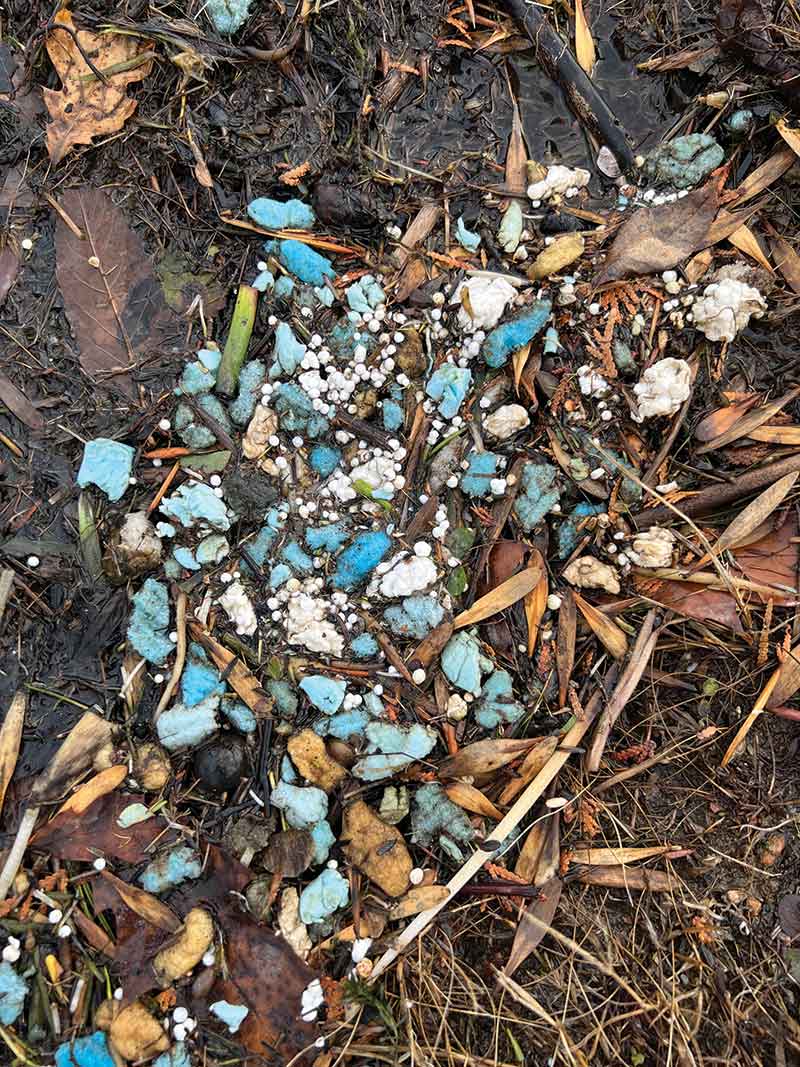Visit Lake Champlain at the height of summer next year and among the many boaters navigating its scenic waters, you’ll find Julie Silverman, CLF’s Lake Champlain Lakekeeper. She’ll be easy to spot as she monitors the lake’s waters in the Lakekeeper boat, a vessel dedicated to patrolling this extraordinary natural resource.
As CLF’s seventh Lake Champlain Lakekeeper, Silverman is carrying on a 20-year legacy of activism and engagement for Vermont’s iconic lake. The Lakekeeper serves not only as an on-the-water advocate who can identify and monitor pollution problems, but also as a visible spokesperson engaging the public directly about protecting and restoring the ailing lake.
“This role is a great opportunity to connect with people, from the mountains to the lake, and help them really understand how important the water is to everyone’s life,” says Silverman, who joined CLF in February.
Lake Champlain is one of North America’s most historic and cherished waterbodies. It provides drinking water to 145,000 people, is home to nearly 600 species of fish, birds, and other animals, and is a recreational haven to several hundred thousand tourists who come to swim, boat, fish, camp, and vacation on its shores every year.

But 20 years ago, the iconic lake was in trouble, making headlines in all the wrong ways. Two dogs had died after ingesting lake water tainted with cyanobacteria, and NBC’s Today show featured Lake Champlain in a “Don’t Go There” guide. In 2002, environmental groups around the country were celebrating the 30th anniversary of the Clean Water Act and its role in cleaning up polluted waters nationally. But CLF’s Vermont advocates faced a lake in decline.
Water quality problems forced beaches to close and triggered water advisories for many portions of the lake. Virulent toxic blue-green algae (cyanobacteria) outbreaks – thick, pea soup-looking growths that permeate the lake – had become routine occurrences during summer months. Invasive weeds, including Eurasian milfoil and water chestnuts, and bacterial contamination from polluted stormwater added to the water woes.
By the early 2000s, CLF already had a long history of battling water pollution in Lake Champlain. Its legal advocates had successfully fought against sprawling development, illegal stormwater discharges, and industrial-scale agriculture – all sources of the phosphorus pollution that fuels algal and bacterial outbreaks. CLF had also challenged federal regulations that aimed to reduce this harmful pollution but were too lax to improve water conditions.
Adding a Lakekeeper to the Vermont team’s roster provided a unique opportunity to expand the organization’s watchdog role, while also creating a voice that could speak for the lake and the communities that depend on it.
In the two decades since the first Lakekeeper launched their boat onto the water, the role has helped secure a string of major victories for the lake, including stronger and expanded protections against polluted stormwater runoff. Most significantly, after a years-long fight led by CLF, the EPA issued more stringent limits on the amount of phosphorus pollution that could be discharged into the lake. And, in 2016, in large part due to the Lakekeeper’s advocacy, the state legislature signed sweeping legislation aimed at cleaning up water pollution in Lake Champlain and statewide.
Even with these victories, much work remains to restore Lake Champlain to health. Stormwater and phosphorus pollution still trigger blue-green algae (cyanobacteria) outbreaks during the summer months, and rising temperatures due to climate change will only make them worse. Climate change also threatens the lake in other ways, including more frequent flooding from increased rainfall.
“Rising waters spill over riverbanks, inundating our streets, damaging our neighborhoods, drowning our farms, and washing oil, plastic, manure, and other pollutants into Lake Champlain,” says Silverman.
Plastic pollution, especially dock foam, has also become an increasing concern for Silverman and locals – one that she hopes to tackle through legislation in the 2023 session.
These ongoing challenges are why, 20 years in, the Lakekeeper remains such an important voice in the fight for a healthy Lake Champlain. Old threats shift and persist, and new ones emerge, requiring continued vigilance, action, and – most importantly – public engagement and support.
Silverman admits that it can be easy for people to feel overwhelmed by these issues. “So many decisions are made all the time that impact our waterways, our environment, our health,” she says.
But she’s heartened by the people she has met during her first summer on the water and recognizes that those conversations are just as important as CLF’s next legal, legislative, or regulatory push.
“Talking to people on the dock, even very casually, being available to answer questions and help them understand what they are seeing and how they can have an impact – that is so powerful,” she says.
Making progress on the breadth of issues affecting Lake Champlain can take time, but Silverman will be there to continue her careful watch over the lake for summers to come.
- Thank you to the WaterWheel Foundation – created by the rock band Phish to oversee the band’s charitable activities – for supporting CLF’s Lake Champlain Lakekeeper for 20 years. Learn more at waterwheelfoundation.org.
- Stay up to date with Julie Silverman’s Lakekeeper work to protect Lake Champlain both on and off the water at instagram.com/lakekeeperjulie
A Model for Success
From its shimmering waters and dynamic tides to its salt marshes and historically rich habitats, the Great Bay Estuary lies at the heart of what makes New Hamphire’s Seacoast and southern Maine so special. But just like Lake Champlain, pollution is pushing the estuary toward a tipping point, degrading its health and its habitats and threatening traditional activities like fishing and oystering.

Recognizing the success of the Lake Champlain Lakekeeper, 10 years ago CLF launched its Great Bay–Piscataqua Waterkeeper. The Waterkeeper plays a key role as advocate, convener, and watchdog, bolstered by the experience and expertise of CLF’s policy and advocacy team.
Melissa Paly, CLF’s current Great Bay–Piscataqua Waterkeeper, plays a unique and vital role in the protection and restoration of the Great Bay estuary and all the values it provides to Seacoast communities.
Follow the Great Bay–Piscataqua Waterkeeper on Instagram
(@greatbaypiscataquawaterkeeper) and Twitter (@GBPWaterkeeper). Or look for the Save the Great Bay-Piscataqua Estuary on Facebook.





